5 Pleated Slipcover Skirt Designs + Lining Tips
A pleated skirt adds so much character to a slipcover no matter if its a classic tailored style with a single pleat on each corner, or a bunch of cute, chunky box pleats all the way around.
Choosing a pleat style is only half the fun of designing your slipcover skirt. You also have to decide if your skirt will look its best with, or without a lining.
In today’s post, I share the five most common pleated skirt styles, and why I choose to line them, or not. Plus, I let you in on what type of lining I use.
Tailored Skirt
The tailored skirt is by far the most popular pleated style for slipcovers. It’s typically constructed with flat panels and a single inverted box pleat at each corner. It’s a classic!
This type of skirt can be designed tall, or short. Skirt height will depend on the look you’re going for, your furniture’s proportions, and where you want or need to place the skirt seam line.
For the natural denim slipcover above, the skirt is attached a couple inches below the deck edge and hangs to the floor. This gives a look of a tall skirt without overpowering the chair.
On this linen sleeper sofa, I updated the tailored skirt placement by dropping the seamline low to create a short skirt that floats around the bottom of the furniture. I love the light and airy look.
Most of the tailored skirts I make for large classic pieces (above) are designed with a tall 12″ skirt that attaches at the deck edge and falls to the ground.
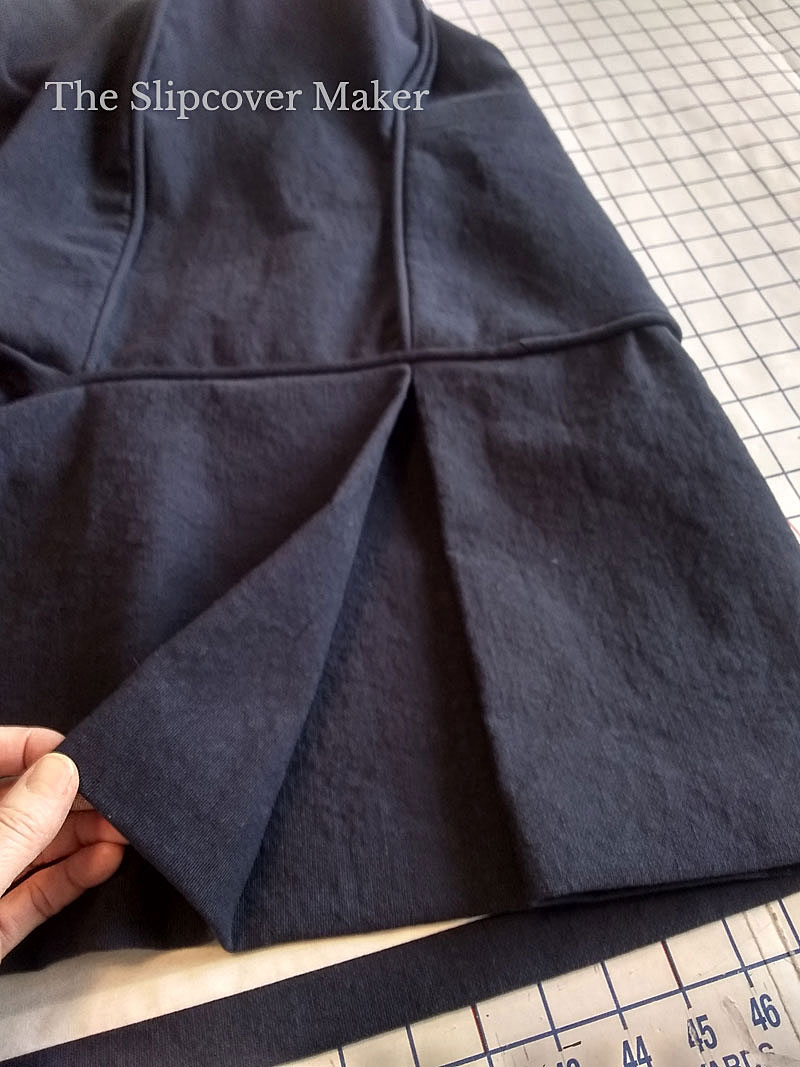
Above is how the inverted box pleat on a tailored skirt looks at the front corner of the slipcover.
Lining a tailored skirt: I line most tailored skirts no matter the fabric. Why? Lining adds weight and body to the flat panels. It helps the skirt hang smooth, and gives the a slipcover a professional finish.
The only time I don’t line a tailored skirt is when the fabric is thick, very heavy and has a lot of body. If the skirt can hang straight and smooth on its own even after washing the slipcover, I don’t line it.
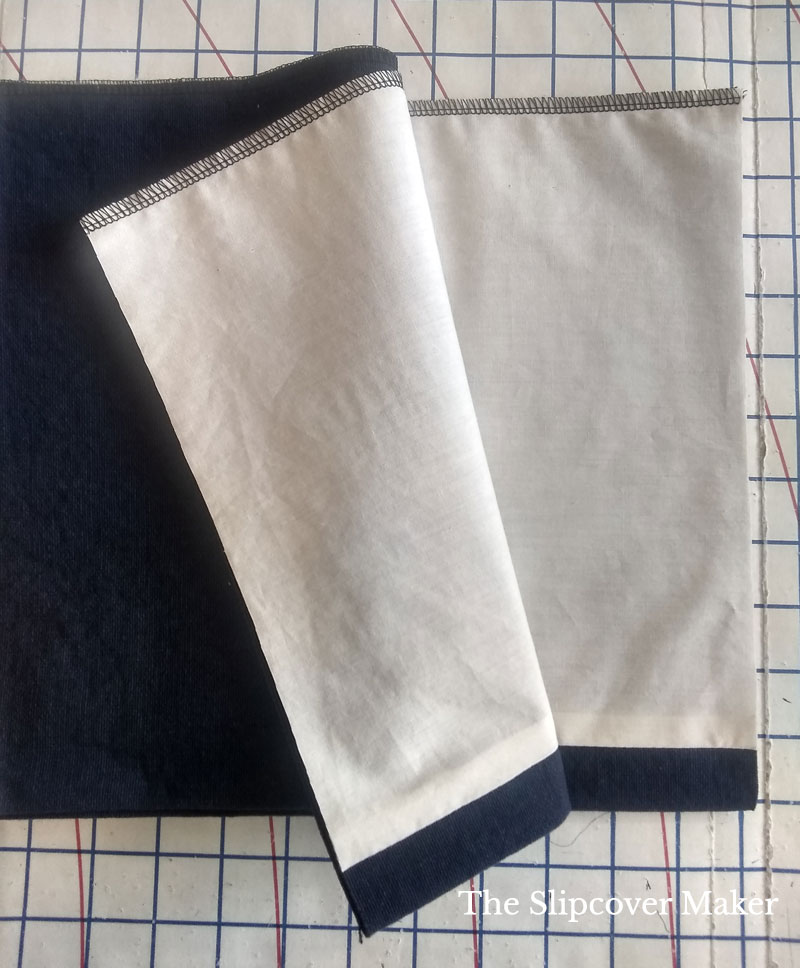
This close-up photo shows what my lined tailored skirt panels look like on the inside. I start the lining 1″ up from the bottom edge.
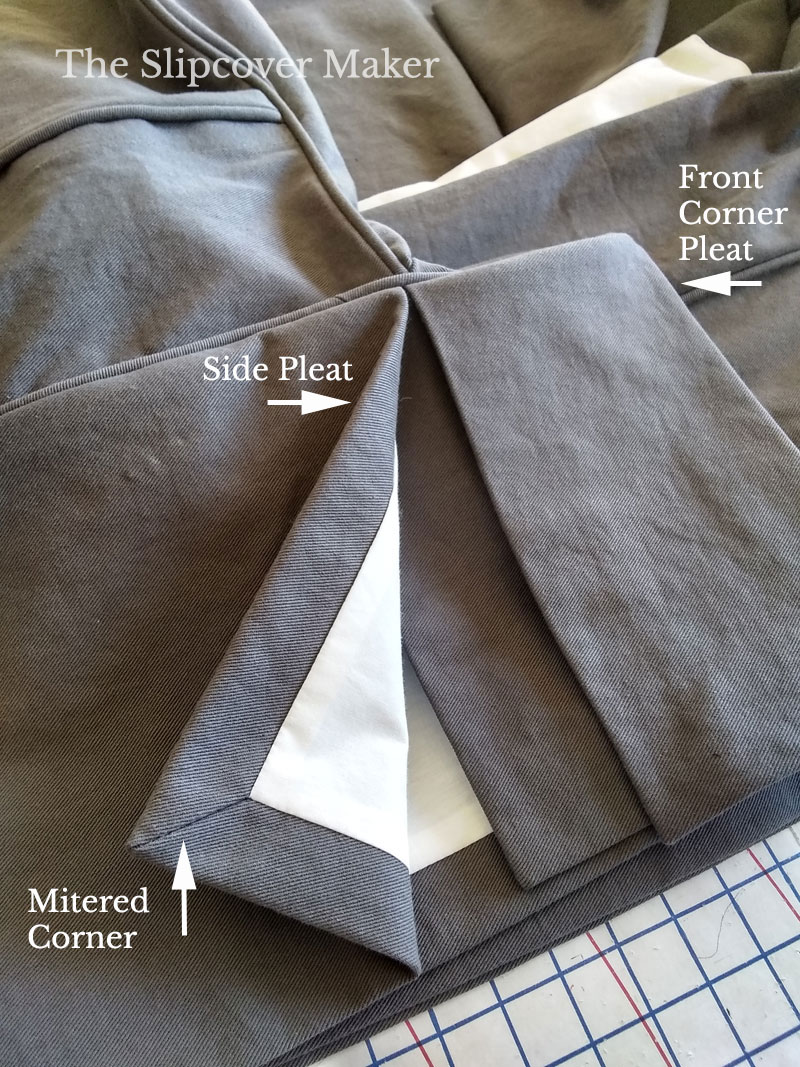
Modified Tailored Skirt
Sometimes a tailored skirt is designed with more than one corner pleat. The skirt is still constructed with flat panels but the pleat style can be modified. This is where you can get creative.
One example of this is the grey cotton bull denim slipcover above. The skirt has a front corner pleat, and a second pleat around to the side.
Two inverted box pleats in such a tight space creates a lot of bulk so I changed the pleat construction to a flap-style with mitered corners. This way the double pleats hang smooth and flat.
This washed linen ottoman slipover is another example of a modified tailored skirt. Sherri, at August Blues, created soft, double inverted pleats at each corner. She kept the pleat depth shallow and added a lining.
Lining a modified tailored skirt: I usually line this type of skirt for the same reasons I line a tailored skirt. I consider the type of pleat and fabric when deciding to line, or not.
Box Pleat Skirt
A box pleat skirt is made up of continuous pleats of the same size. It can be designed short, or tall but always with a healthy pleat depth.
I had fun creating this hemp slipcover (above) with a box pleat skirt. It turned out so pretty!
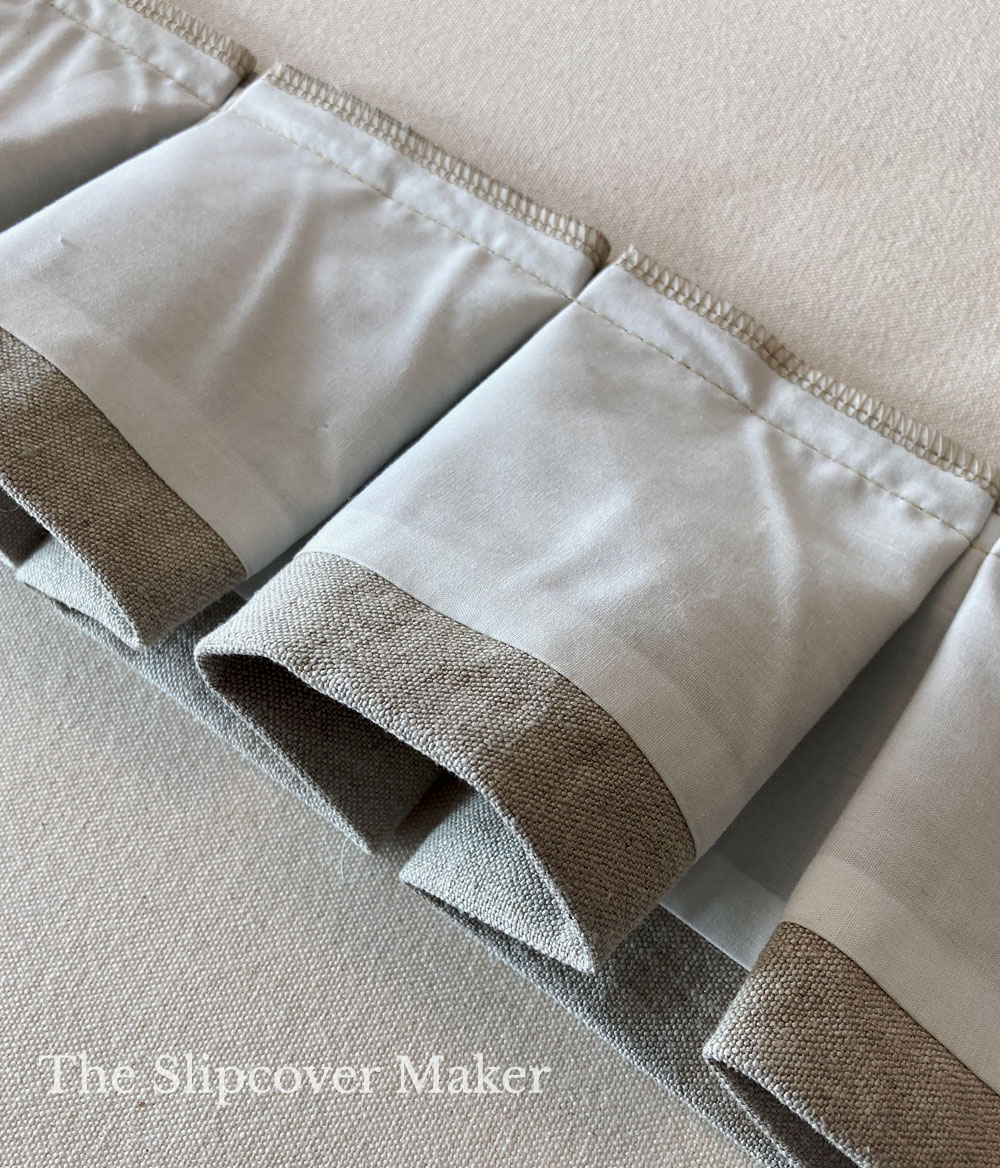
Lining a box pleat skirt: Even though this hemp fabric had a lot of body and a crisp hand, I chose to line the skirt. This slipcover is washable. The fabric will soften, get floppy, and flatten overtime. A lining helps maintain the shape and body of the pleats.
By comparison, the heavyweight white denim slipcover with a box pleat skirt you saw at the top of this post does NOT have a lining. That slipcover was designed to look casual and relaxed, hold up to heavy traffic, and be washed frequently with bleach. A lining wasn’t necessary.
Above is how my box pleat skirts look with lining. Like a lined tailored skirt, I start the lining 1″ up from the skirt bottom edge.
Knife Pleat Skirt
A knife pleat skirt is constructed with all pleats running around the chair in the same direction. They can be designed narrow, wide, short or tall.
Lining a knife pleat skirt: Some knife pleat designs are only 1″ to 2″ in size, like Shelley’s blue slipcover above. These are referred to as “butter pat” pleats. The skirt fabric is doubled instead of lined.
Other knife pleat styles are tall and wider. Depending on the type fabric a lining might be needed.
Waterfall Skirt
A waterfall skirt looks like a tailored skirt with a single inverted box pleat at all four corners, or at just the front corners. However, it’s not attached in the same way.
Think of the front skirt as a continuation of the deck. It spills over the front edge without a visible seam.
The back and side sections of the slipcover do not have an attached skirt. Instead, the skirt is a continuation of the slipcover body. A pleat is often set in the back corner seams to mimic the front pleat detail.
For my ticking stripe slipcover above, I chose to create a waterfall skirt only at the front.
Lining a waterfall skirt: I occasionally line a front waterfall skirt panel if it needs some weight to help it hang smooth and straight.
I never line the side and back of a slipcover that has a waterfall design. It would require lining the entire slipcover, which doesn’t work for the type of washable covers I make.
If you decide to line only the front skirt panel make sure that it hangs just like the unlined side and back. Avoid a stiff front skirt and a limp slipcover side and back.
Also, keep in mind the color of your lined front skirt can appear noticeably more saturated than the rest of the slipcover — this can happen when lining a solid white slipcover fabric.
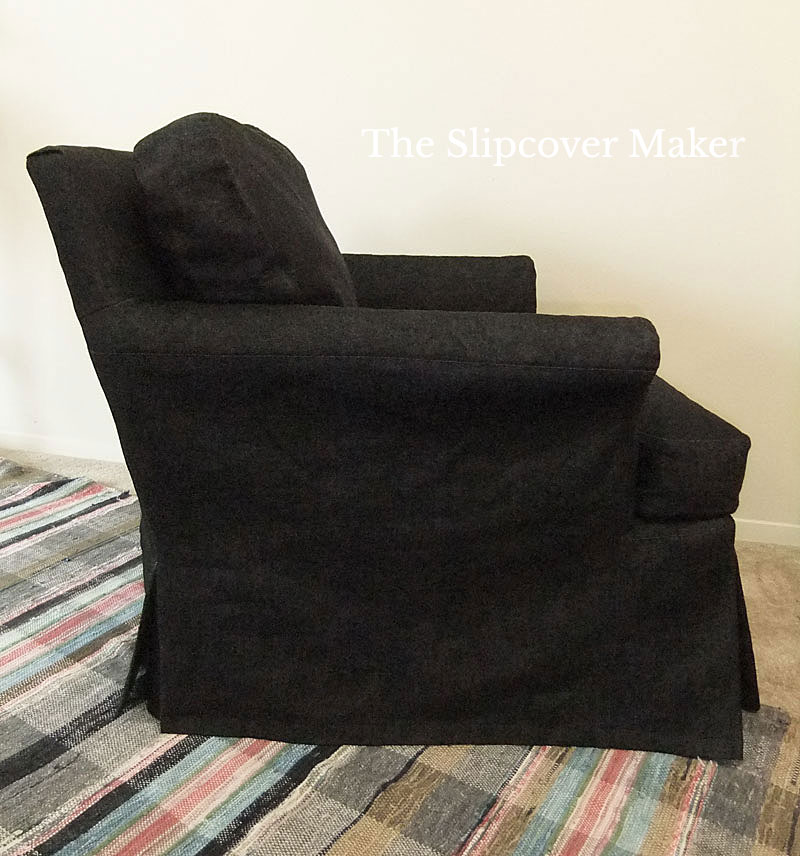
What type of skirt lining do I use?
I like a cotton-poly blend sheeting or broadcloth, 56″ wide or wider. I look for 40% to 60% cotton in the blend. Sorry to say, I don’t have a resource for you because I buy what I can find at my local fabric store.
I never use 100% cotton muslin. It has too much residual shrinkage and gets too limp after washed.
Lining preshrink — I preshrink my lining fabric just like I preshrink my slipcover fabric. If you are making a washable slipcover it’s important to preshrink both fabrics to ensure they are compatible when you launder your slipcover.
Lining color — I mostly use white or natural even if I’m lining a dark color slipcover fabric. These colors are easier to find on a regular basis than the right shade of grey or khaki.
That’s it for this week. Happy Thanksgiving everyone! — Karen

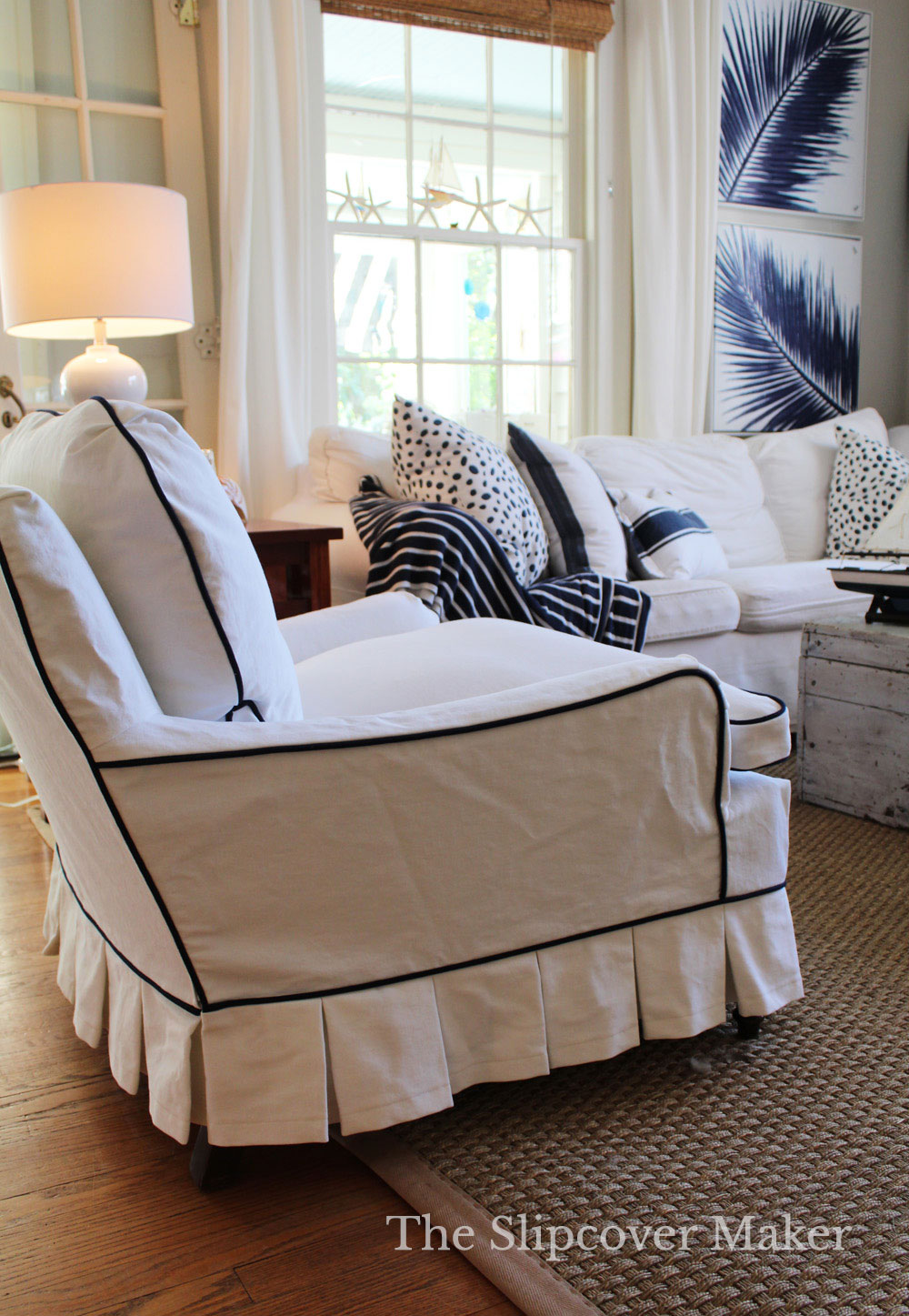
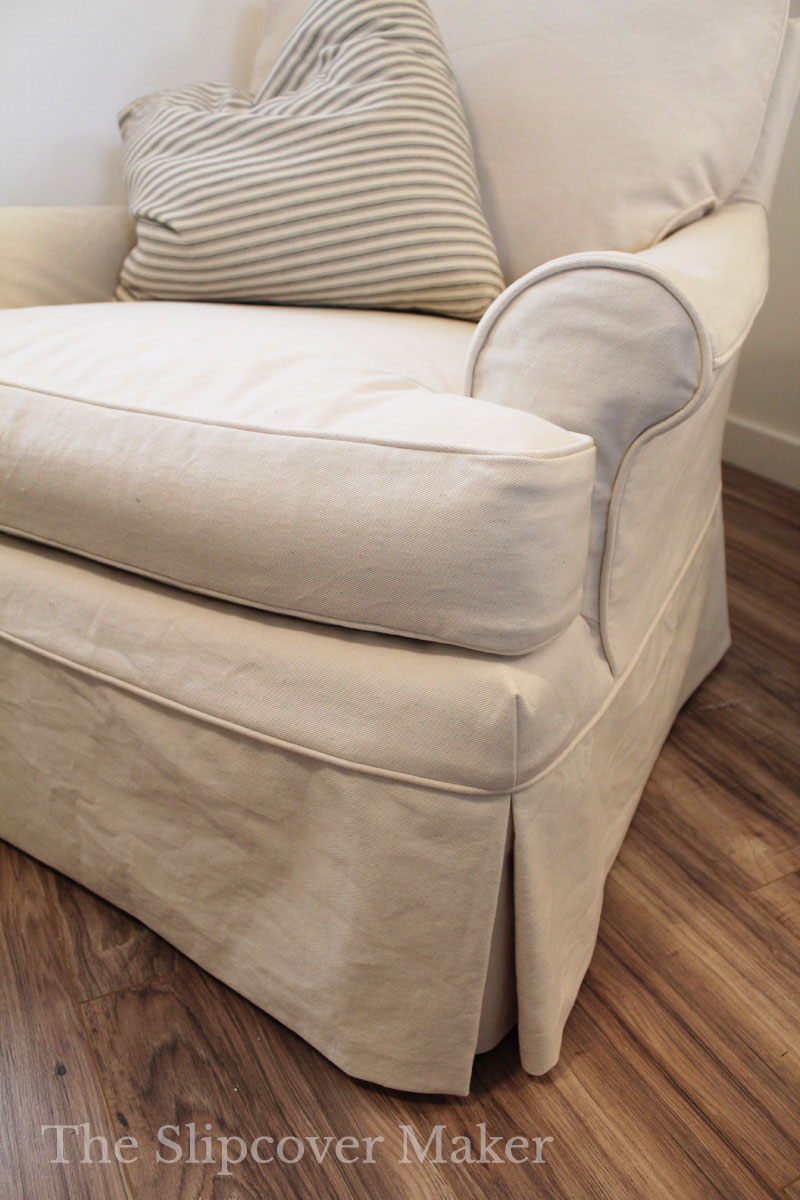
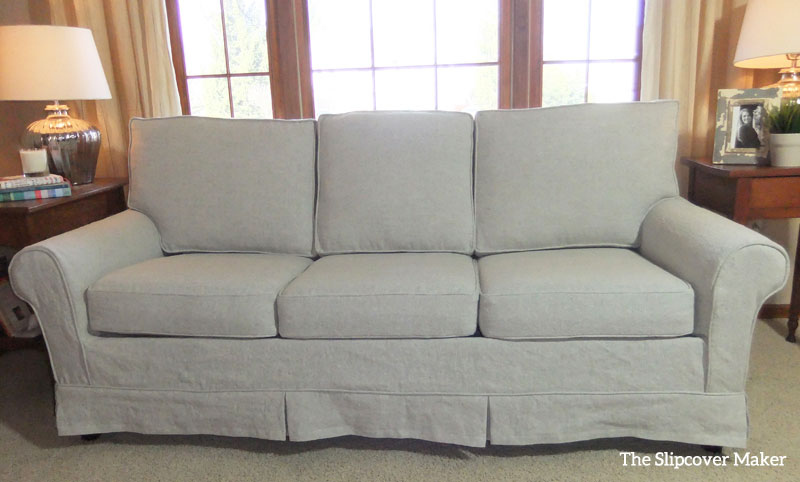
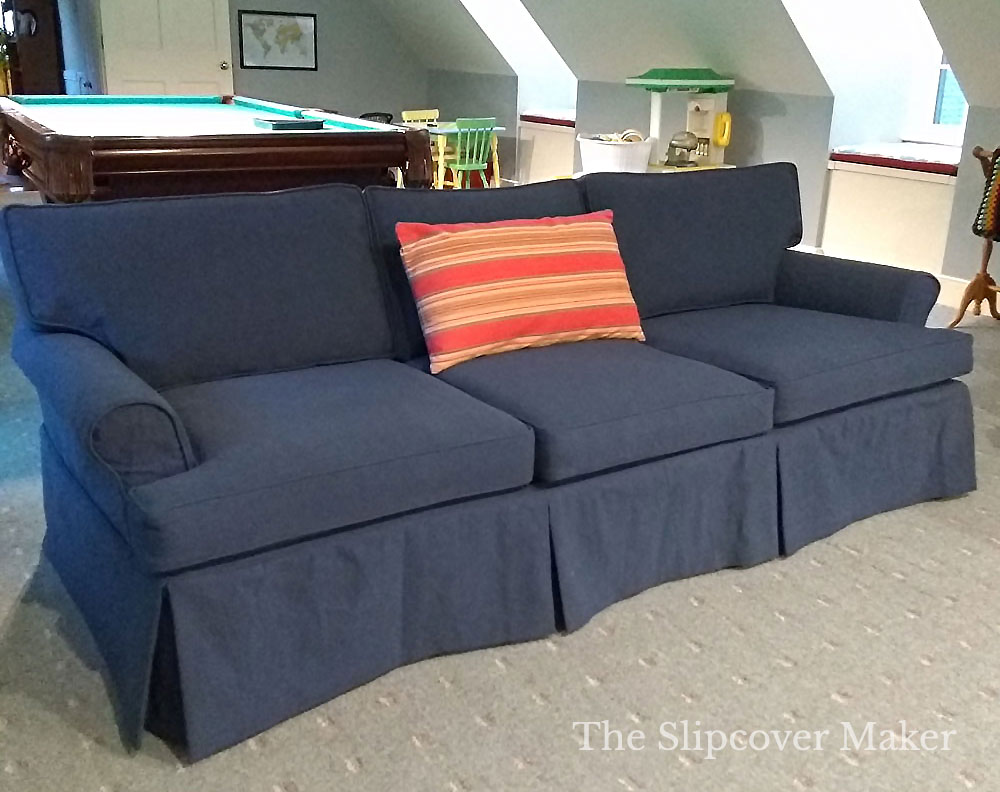
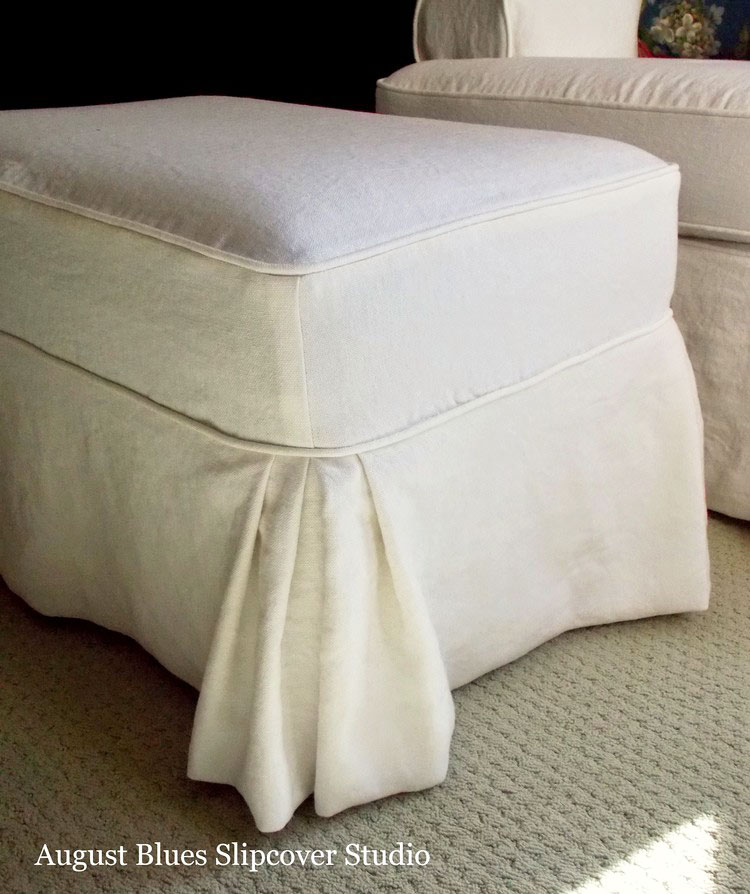
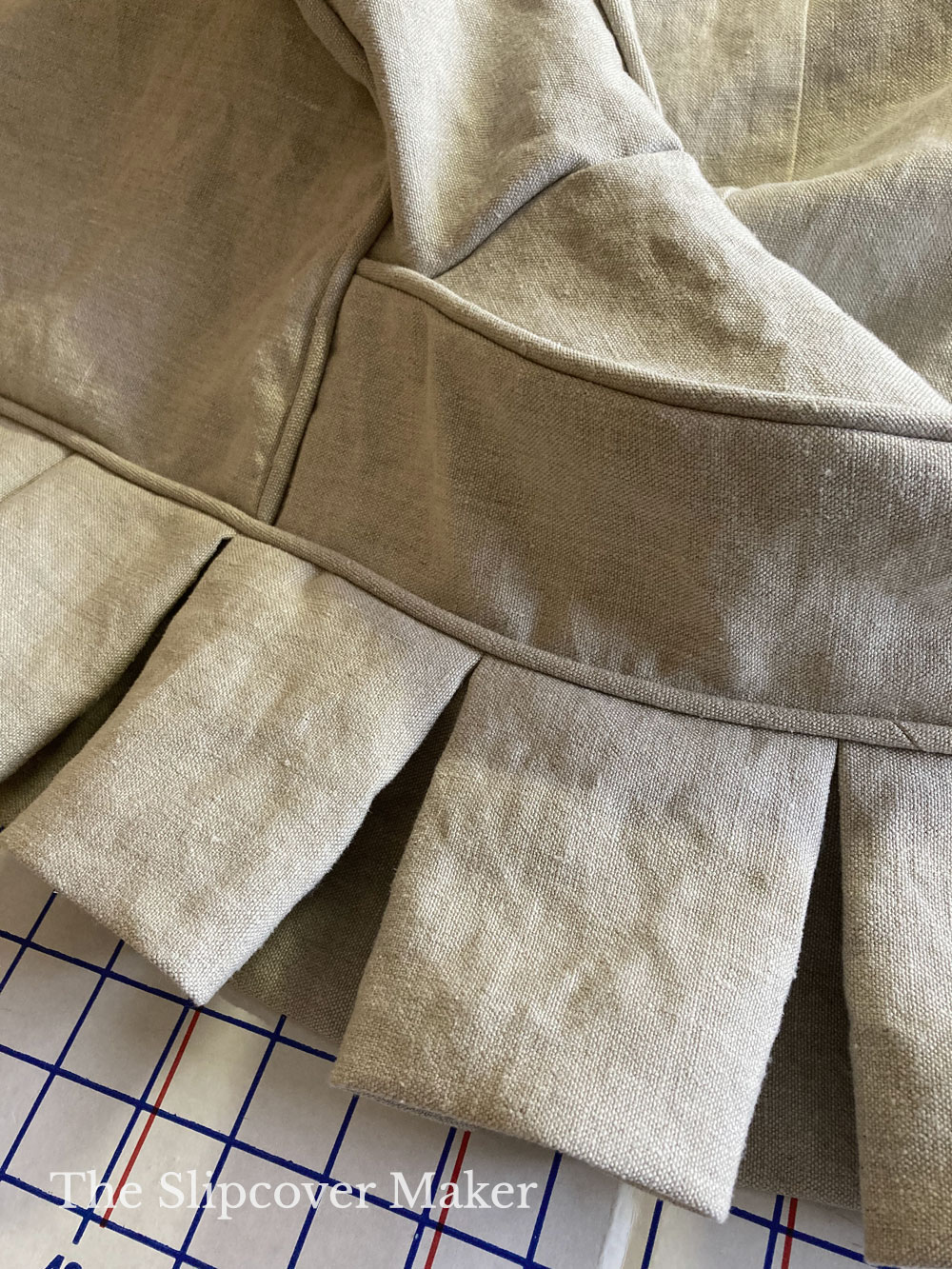
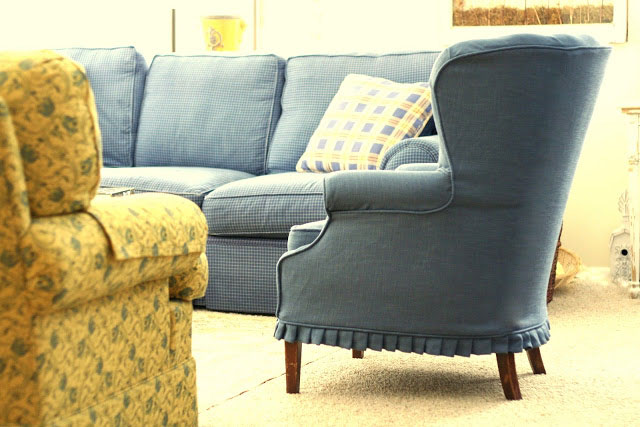
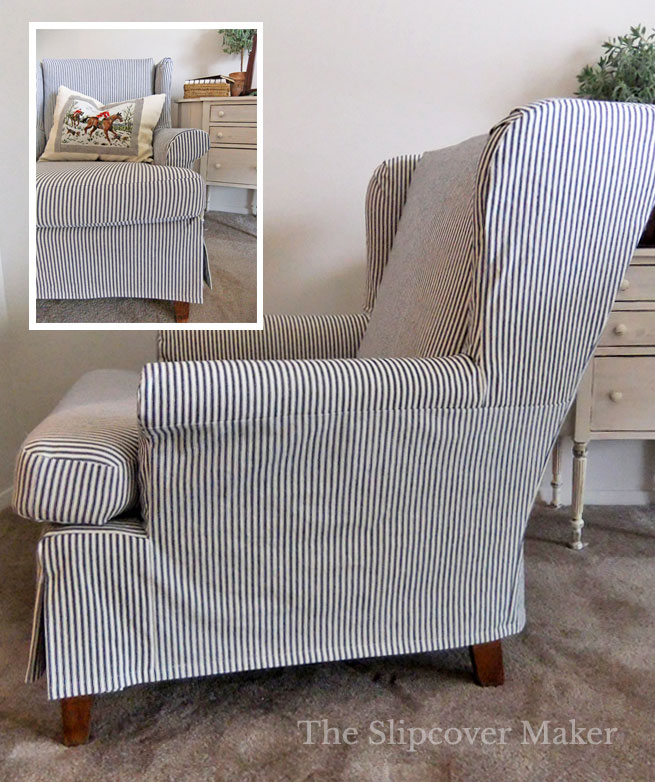
This is great information. Thank you for posting.
Glad it was helpful, Cynthia. I appreciate you following my blog.
I would like to know if you can make a slipcover for a chair and ottoman I have. Thank you!
Natalie — I would need an existing slipcover for each piece to take apart and use as patterns. If you have slipcovers for me to copy please reach out to me via my contact page and I will provide more detail. Thank you.